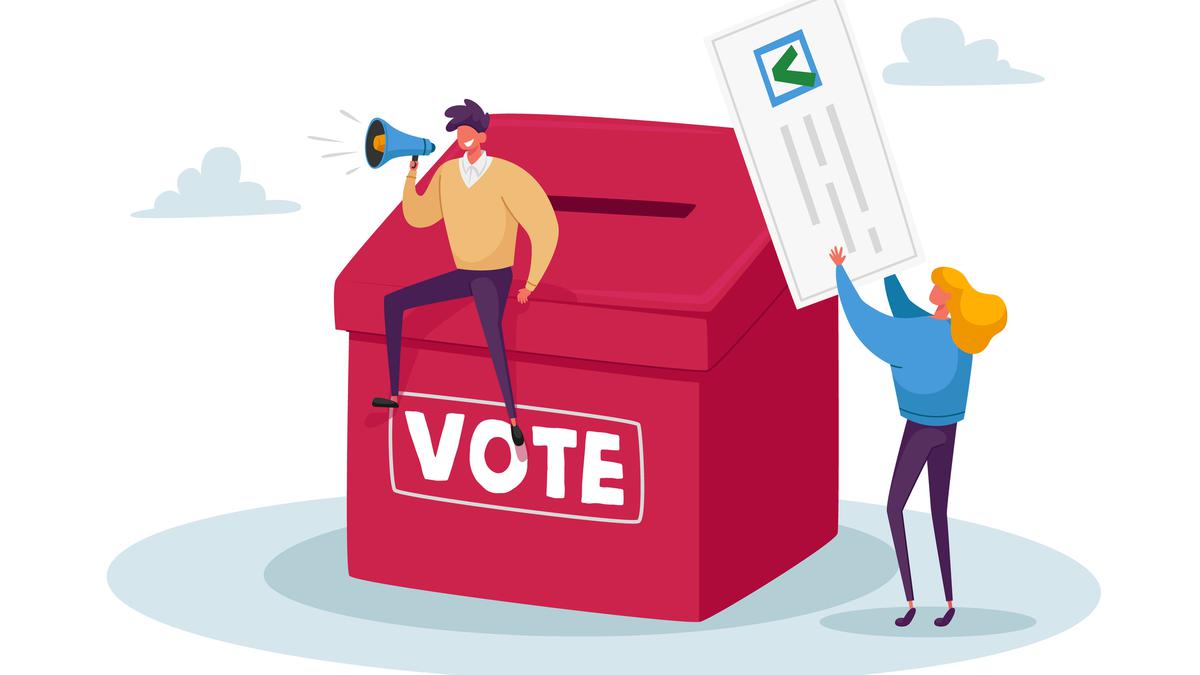
Explained | What is the debate around ‘one nation, one election’? Premium
The Hindu
.Central govt. set up panel headed by former President Kovind to explore 'One Nation, One Election' plan. Constitution and Representation of People's Act 1951 need to be amended to conduct simultaneous polls. Advantages include saving public money, reducing strain on admin. setup, timely implementation of policies and focus on development. Concerns include feasibility, federalism and accountability. Misleading notion of substantial costs associated with frequent elections.
The story so far: On September 1, the Central government set up a panel headed by former President Ram Nath Kovind to explore the feasibility of the ‘one nation, one election’ (ONOE) plan.
The idea of ONOE centres around the concept of synchronising the timing of Lok Sabha and State Assembly elections across all States to reduce the frequency of polls throughout the country.
After the enforcement of the Constitution on January 26, 1950, the first-ever general elections to Lok Sabha and all State Assemblies were conducted simultaneously in 1951-1952. The practice continued into the three subsequent Lok Sabha elections until 1967, after which it was disrupted. The cycle was first broken in 1959 after the Centre invoked Article 356 (failure of constitutional machinery) of the Constitution to dismiss the then-Kerala government. Subsequently, due to defections and counter-defections between parties, several Legislative Assemblies dissolved post-1960, which eventually led to separate polls for Lok Sabha and State Assemblies. Currently, the assembly polls in the States of Arunachal Pradesh, Sikkim, Andhra Pradesh and Odisha are held together with the Lok Sabha elections.
In August 2018, the Law Commission of India (LCI), chaired by Justice B. S. Chauhan, released a draft report on simultaneous elections, wherein the constitutional and legal questions related to the issue were analysed. Notably, the Commission submitted that simultaneous elections are not feasible within the existing framework of the Constitution. It said that the Constitution, the Representation of the People’s Act 1951 and the Rules of Procedure of Lok Sabha and State Assemblies would require appropriate amendments to conduct simultaneous polls. The commission also recommended it receive ratification from at least 50% of the States. However, with respect to the advantages of holding simultaneous polls, the commission said that ONOE will lead to the saving of public money, reducing the strain on the administrative setup and security forces, timely implementation of government policies, and administrative focus on development activities rather than electioneering.
Way back in 1999, the LCI headed by Justice B. P. Jeevan Reddy also advocated for simultaneous elections.
The foremost concern is with regard to its feasibility. Article 83(2) and 172 of the Constitution stipulates that the tenure of Lok Sabha and State Assemblies respectively will last for five years unless dissolved earlier and there can be circumstances, as in Article 356, wherein assemblies can be dissolved earlier. Therefore, the ONOE plan raises serious questions — what would happen if the Central or State government collapses mid-tenure? Would elections be held again in every State or will the President’s rule be imposed? Amending the Constitution for such a significant change would not only necessitate extensive consideration of various situations and provisions but would also set a concerning precedent for more constitutional amendments.
Second, the idea of ONOE does not square with the concept of ‘federalism’ as it is established on the notion that the entire nation is “one” contradicting the content of Article 1 which envisages India as a “Union of States”. Third, the present form of recurrent elections can be seen as beneficial in a democracy as it allows voters to have their voices heard more frequently. As the underlying issues of national and State polls are different, the present framework prevents the blending of issues, ensuring greater accountability.













